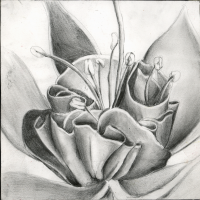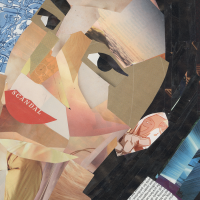-
Educator
-
Growing up with different learning abilities made me aware that learning is an open, non-linear, and individual process dictated by our perceptions of our own strengths (and limitations) and our interactions with the world. It is a complex adaptive system where even a small change in any element can affect the whole. Enhancing the complexity of learning is the interconnectedness of the arts and humanities--mediating or being mediated by technology and science, allowing one’s creative expression to intrinsically intersect, enrich, and draw upon these different fields. With this understanding of the complexity of the perceptions and processes involved in learning, I ground my teaching in kindness, passion, and openness.
Kindness: I am most effective in the classroom when I can flexibly balance curricular objectives, content, and assessment with what I learn about and from my students and their interests. Regardless of the course content, I need to be the most avid learner, the one committed to discover who my students are, to acknowledge their passions and strengths, and to promote an environment of acceptance and trust so that they are comfortable revealing themselves. Kindness means that I share my cellphone number and encourage my students to text me whenever they need to. It means that all their questions are important and worth my attention. It also means that failure is embraced as the first step to learning. Kindness promotes an environment of collective trust that nurtures passion.
Passion: I try to convey to students that what is most important is not knowledge of a specific medium or technology, or even the domain of a skill, but their desire to discover their own perceptions and processes so they can more effectively communicate and interact with the world. Under the assumption that--moved by passion--one can learn anything, my projects and assignments aim to inspire students not only to think creatively and critically as they engage course content, but also to embrace their mistakes and find solutions that draw on their own experiences. I see my students’ growing passion in those moments when they are in small groups comfortably critiquing each other’s work based on evaluative rubrics, or when they are eagerly sharing their thoughts and experiences in response to historical or theoretical content. Passion leads to creative and intellectual growth and a rich environment for implementing frequent formative assessment activities that allows measure of how students are invested in their own learning. Passion calls on openness.
Openness: I aspire to remain open to the rich implications of studio-based practices where skills, materials, and concepts impose extra layers of complexity in teaching and learning. Skills acquisition in today’s studio is a fluid process most often mediated by technology. Independent of the binary logic of computing, the use of digital technologies in art opens multiple possibilities for developing creative projects. One can attain similar results using different tools, and students already inhabit digitally saturated environments on a daily basis. Deepening digital literacy therefore entails learning how to relate flexibly to different tools and to choose those that are most appropriate for the student’s specific message, task, or project. My students and I must also remain open to the reality of how our materials impact the environment and how we need to be socially responsible in our choices. Finally, we must be open to new ideas and concepts, different pedagogical approaches, new materials, innovative techniques and technologies that can reshape teaching, learning, and creative expression in ways we cannot even anticipate.
Through kindness, passion, and openness, I learn about my students, accommodate their different learning styles, aesthetic choices, intellectual and social interests, and engage them in intersecting, enriching, and drawing upon different fields, concepts, materials, and technologies to support their creative and intellectual growth.


